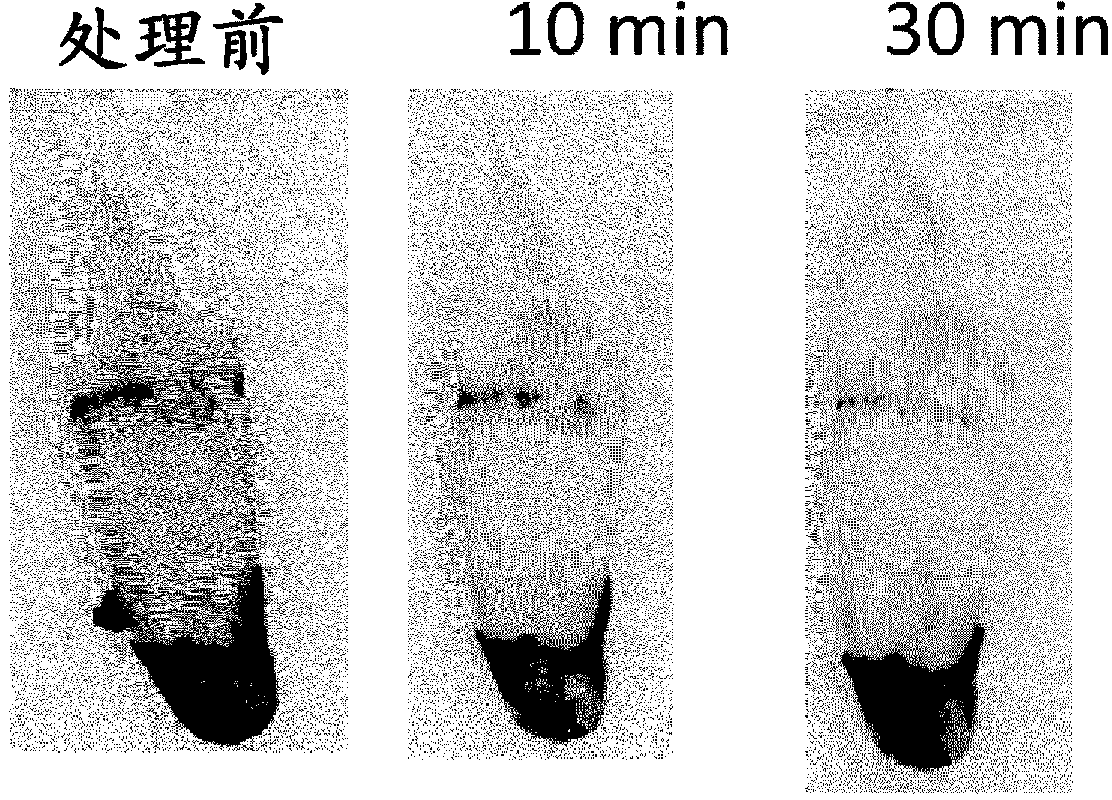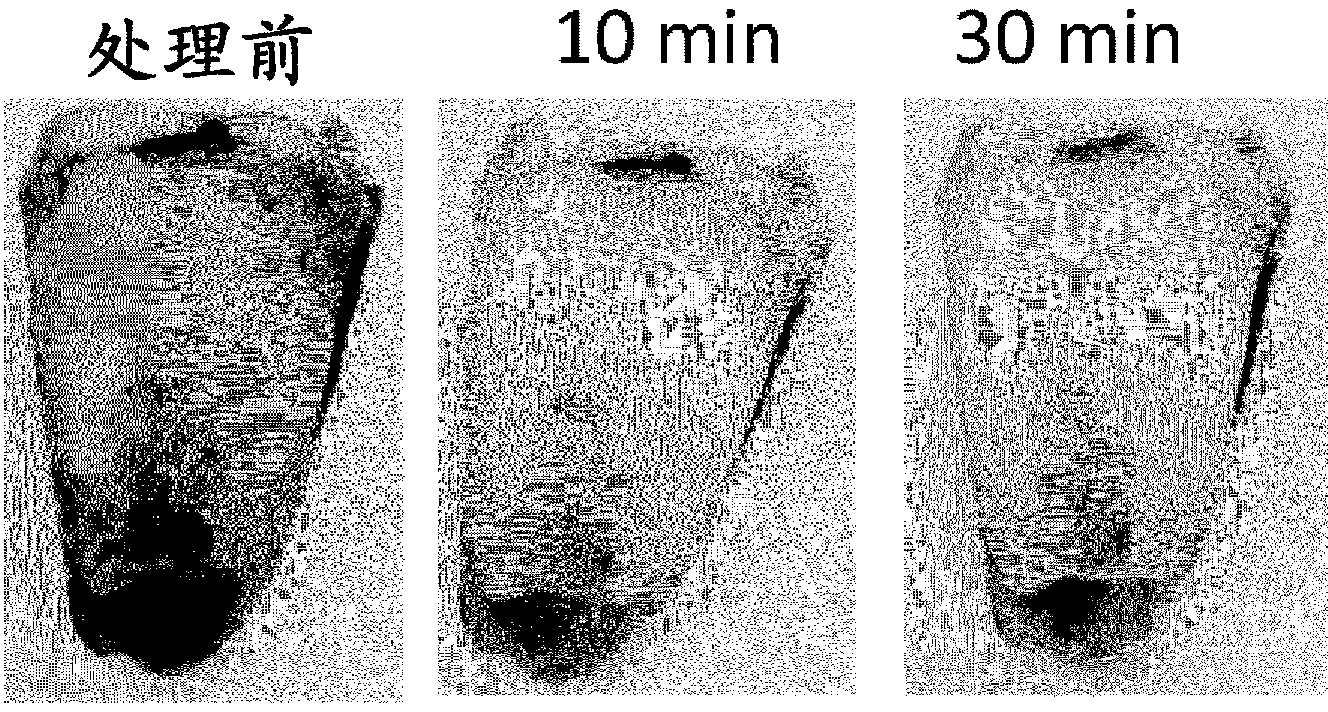Oral composition for removing tooth stain
A composition and technology in the oral cavity, which can be used in oral care, dentistry, cosmetic preparations, etc., can solve problems such as tooth dissolution, and achieve the effects of preventing dissolution, strong cleaning effect, and less damage
- Summary
- Abstract
- Description
- Claims
- Application Information
AI Technical Summary
Problems solved by technology
Method used
Image
Examples
Embodiment 1
[0059] Fabrication of Dried Tea-Stained Apatite for Stained Tooth Models
[0060] Put 1 to 2 g of hydroxyapatite (Biogel-HTP, manufactured by BioRad) into a 50 mL test tube, add 20 mL of protein solution (1% EquosSCP5000, Nitta Gel Company), and let it stand for 10 to 15 minutes (min). , centrifuge (3000 x g, 2 min), and remove the supernatant. Afterwards, add the apatite precipitated after centrifugation to 20 mL of liquid with tea stains (tea stains) (put 5 g of instant coffee, 2 bags of black tea in bags, and 2 bags of green tea in bags into 100 mL of water, heat with microwave 2 minutes. After that, vibrate at room temperature, and place it for cooling for 3 hours to one night. After that, filter it with 200 mesh filter paper. The liquid obtained in this way is the liquid with tea stains), after standing for 10 to 15 minutes, carry out Centrifuge (2500rpm, 2 minutes), remove the supernatant. Finally, 20 mL of artificial saliva (20 mM HEPES-KOH pH 7.0, 1.5 mM CaCl 2 , ...
Embodiment 2
[0069] The relationship between the concentration of super phosphoric acid and the effect of promoting bleaching
[0070] In this example, the apatite bleaching effect of various concentrations of sodium superphosphate on 3.5% hydrogen peroxide was compared. Among them, the pH is 7.5, the temperature is kept at 42° C., and the bleaching time is 10 minutes, 30 minutes, 1 hour and 3 hours. The results are shown in Table 2.
[0071] Table 2. The concentration of various super phosphoric acids on the effect of improving the bleaching effect of hydrogen peroxide
[0072]
[0073] According to the results shown in Table 2, it can be seen that a higher bleaching acceleration effect can be obtained when the superphosphoric acid concentration is 5% to 10%.
Embodiment 3
[0075] Different concentrations of hydrogen peroxide have different bleaching effects
[0076] The differences in the bleaching effects of hydrogen peroxide at different concentrations (3.5% to 10%) were studied and evaluated in the examples of the following conditions. (i) super phosphoric acid: 5%, 10%, 20%; treatment time: 10 minutes, 20 minutes, 30 minutes; (iii) treatment temperature: 45°C; (iv) pH7.0. Moreover, as several comparative examples, the bleaching effect by using hydrogen peroxide alone and the bleaching effect by using superphosphoric acid alone under alkaline conditions (pH9.5-11.6) were examined. The obtained results are shown in Table 3.
[0077]From the results in Table 3, it can be seen that if super phosphoric acid is used alone, no matter which condition is used, the pigment residual rate is above 50%, and the bleaching effect is low. In addition, when hydrogen peroxide is used alone, under alkaline conditions, even if 20% hydrogen peroxide is used fo...
PUM
| Property | Measurement | Unit |
|---|---|---|
| Bronsted acidity | aaaaa | aaaaa |
| Bronsted acidity | aaaaa | aaaaa |
| Bronsted acidity | aaaaa | aaaaa |
Abstract
Description
Claims
Application Information
 Login to View More
Login to View More - R&D
- Intellectual Property
- Life Sciences
- Materials
- Tech Scout
- Unparalleled Data Quality
- Higher Quality Content
- 60% Fewer Hallucinations
Browse by: Latest US Patents, China's latest patents, Technical Efficacy Thesaurus, Application Domain, Technology Topic, Popular Technical Reports.
© 2025 PatSnap. All rights reserved.Legal|Privacy policy|Modern Slavery Act Transparency Statement|Sitemap|About US| Contact US: help@patsnap.com



